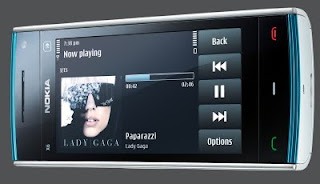What is Broadband Internet Access?The term broadband refers to any type of transmission technique that carries several data channels over a common wire. DSL service, for example, combines separate voice and data channels over a single telephone line. In DSL, voice fills the low end of the frequency spectrum and data fills the high end.
In home networking, broadband constitutes any form of high-speed Internet access using this transmission technique. Both DSL and cable modem are common broadband Internet technologies. So-called broadband
The term "broadband" refers to a communications technique for transmitting multiple simultaneous data channels. Broadband is a popular form of high-speed Internet access.
What is Dial Up Internet Access?Dial up networking technology provides PCs and other network devices access to a LAN or WAN via standard telephone lines. Dial up Internet service providers offer subscription plans for home computer users.
Types of dial up services include V.34 and V.90 modem as well as Integrated Services Digital Network (ISDN). Dial up systems utilize special-purpose network protocols like Point-to-Point Protocol (PPP).
To use a dial up Internet connection, a client modem calls another modem located at the Internet Service Provider (ISP). The modems transfer network information over the telephone until one modem or the other disconnects.
When the popularity of the Internet exploded in the 1990s, dial up was the most common form of Internet access due mainly to its low cost to setup. However, the performance of dial up networking is relatively poor due to the limitations of traditional modem technology. V.90 modem dial up supports less than 56 Kbps bandwidth and ISDN handles approximately 128Kbps.
Many home users are currently replacing their dial up services with high-speed broadband technologies that operate at much higher speeds.
Dial up networking technology provides PCs and other network devices access to a LAN or WAN via telephone lines. Dial up Internet service providers offer subscription plans for home computer users.
What is Satellite Internet Access?Satellite Internet is a form of high-speed Internet service. Satellite Internet services utilize telecommunications satellites in Earth orbit to provide Internet access to consumers.
Satellite Internet service covers areas where DSL and cable access is unavailable. Satellite offers less network bandwidth compared to DSL or cable, however. In addition, the long delays required to transmit data between the satellite and the ground stations tend to create high network latency, causing a sluggish performance experience in some cases. Network applications like VPN and online gaming may not function properly over satellite Internet connections due to these latency issues.
Older residential satellite Internet services supported only "one-way" downloads over the satellite link, requiring a telephone modem for uploading. All newer satellite services support full "two-way" satellite links.
Satellite Internet service does not necessary utilitize WiMax. WiMax technology supplies one method to deliver high-speed Internet service over wireless links, but satellite providers may implement their systems differently
Satellite Internet is a form of high-speed Internet service. Satellite Internet utilizes telecommunications satellites in Earth orbit to provide wireless Internet access to consumers. Satellite Internet covers many areas where DSL and cable services are unavailable.
What is Integrated Services Digital Network:ISDN is a network technology that supports digital transfer of simultaneous voice and data traffic. Similar to DSL in this respect, an ISDN Internet service works over ordinary telephone lines. ISDN Internet service generally supports data rates of 128 Kbps.
ISDN emerged as an alternative to traditional dialup networking during the 1990s. The relatively high cost of ISDN service, though, limited its popularity with residential customers at the outset. More recently, the much higher network speeds supported by newer broadband technologies like DSL have drawn many consumers away from ISDN service.
ISDN technology today has limited applications as a networking solution. Some customers who live in rural areas of the U.S. subscribe to ISDN Internet as an alternative to satellite Internet. ISDN phone service also remains fairly common in some European countries.
ISDN supports simultaneous voice and data network connectivity over ordinary telephone lines. ISDN emerged as an alternative to traditional dial-up networking during the 1990s, but more recently its popularity has waned.
What is a Default Gateway?You will sometimes see the term default gateway on network configuration screens in Microsoft Windows.
Answer: In computer networking, a default gateway is the device that passes traffic from the local subnet to devices on other subnets. The default gateway often connects a local network to the Internet, although internal gateways for local networks also exist.
Internet default gateways are typically one of two types:
On home or small business networks with a broadband router to share the Internet connection, the home router serves as the default gateway.
On home or small business networks without a router, such as for residences with dialup Internet access, a router at the Internet Service Provider location serves as the default gateway.
Default network gateways can also be configured using an ordinary computer instead of a router. These gateways use two network adapters, one connected to the local subnet and one to the outside network. Either routers or gateway computers can be used to network local subnets such as those in larger businesses.
In Microsoft Windows, the IP address of a computer's default gateway can be accessed in the 'ipconfig' or 'winipcfg' utilities
In computer networking, a default gateway is the device that passes traffic from the local subnet to devices on other subnets. On home networks, the router serves as the default gateway. (Courtesy by www.about.com)

